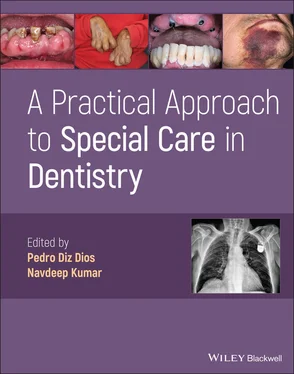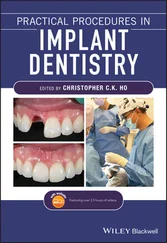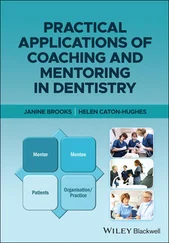Section II: Background Information and Guidelines
Definition
Hyperthyroidism is characterised by an increase in serum concentrations of the thyroid hormones, thyroxine (T 4) and tri‐iodothyronine (T 3). The secretion of T 3and T 4, which occurs in thyroid gland follicles, is normally controlled by thyroid‐stimulating hormone (TSH), a protein secreted from the anterior pituitary gland, which in turn is regulated by thyrotropin‐releasing hormone (TRH), produced in the hypothalamus. When serum concentrations of thyroid hormones are elevated, TSH secretion is suppressed by a negative feedback mechanism.
There are multiple causes of hyperthyroidism as summarised in Table 5.3.2
Graves disease is the most common causeAutoimmune disease that targets the thyroid gland with thyroid‐stimulating autoantibodies against TSH receptor antibodies (TRAbs and TMAbs)Predominantly occurs in women (8:1 ratio)Age of presentation 20–40 years old
General risk factors for hyperthyroidismMore common in womenOver the age of 60 years oldPositive family historyConsumption of excess iodine, either from foods or supplements, or from medications containing iodine (such as amiodarone)Pregnancy within the last 6 monthsOther health problems including pernicious anaemia, type 1 diabetes, primary adrenal insufficiency, myasthenia gravis
Thyroid hyperactivity mimics epinephrine excessRaised pulse and anxietyHypertension with tachycardiaEyelid lag/retractionTremorDislike of heatIrritability
Cardiac disturbances are often present, particularly in older patients, and include tachycardia, arrhythmias (especially atrial fibrillation) and cardiac failure
Additional features:Exophthalmos or proptosisThyroid swelling/lump (goitre)Warm, moist and erythematous skinFine brittle hairChange in weight – typically loss of weight although an increased appetite can lead to weight gainDiarrhoea
Thyrotoxic periodic paralysis (attacks of mild to severe weakness)
Thyrotoxic crisis/thyroid stormA severe condition that starts with extreme anxiety, nausea, vomiting and abdominal painLater, it is associated with fever, sweating, tachycardia and pulmonary oedemaFinally, stupor, coma and possibly death Table 5.3.2 Causes of hyperthyroidism.CategoryCausesPrimaryIncreased stimulation secondary to:Thyroid‐stimulating hormone receptor antibodies (TRAb), seen mostly in Graves diseaseExcess human chorionic gonadotropin (hCG) secretion in patients with hyperemesis gravidarumTrophoblastic tumours such as choriocarcinoma or hydatidiform moleAutonomous thyroid functionToxic multinodular goitreSolitary toxic noduleFamilial non‐autoimmune hyperthyroidismExcess release of stored thyroid hormoneAutoimmune (silent or postpartum thyroiditis)Infective (viral, bacterial, fungal)Pharmacological (amiodarone, interferon‐alpha)Exposure to excess iodineExcess iodine intake during radiographic contrastConsumption of high quantities of iodine‐rich foods (e.g. fish, seaweed, egg yolks)/supplements/medications containing iodine (amiodarone)SecondaryInappropriate thyroid‐stimulating hormone (TSH) secretionTSH‐secreting pituitary adenomaPituitary resistant to thyroid hormoneExtrathyroidExcess intake of thyroid hormoneIatrogenic/factitiousEctopic thyroid hormone secretionStruma ovariiFunctional thyroid metastases
Symptom control with beta‐blockers such as propranolol or nadolol may be used in the first few weeks after diagnosis
Treatment of hyperthyroidismAntithyroid drugs – carbimazole, propylthiouracil and methimazole; the course of treatment lasts 18 months; 30–50% chance of cureRadioactive iodine – very effective/safe; treatment results in hypothyroidism with the need to take levothyroxine long‐termSurgery – considered for younger patients with large goitres and for those in whom antithyroid drugs are not effective; again results in hypothyroidism with the need to take levothyroxine long‐term; potential risk to laryngeal nerve
The severity of hyperthyroidism depends on the amount and duration of hormone excess, age and complications
Thyrotoxic crisis or thyroid storm may lead to coma and occasionally death
A World/Transcultural View
Hyperthyroidism is a common condition with potentially life‐threatening health consequences that affects all populations worldwide. In advanced economies, the prevalence of undiagnosed thyroid disease is falling owing to widespread thyroid function testing and relatively low thresholds for treatment initiation
Iodine nutrition remains a key determinant of thyroid function worldwide. More studies are needed in developing countries, especially within Africa, to understand the role of ethnicity and iodine nutrition fluxes in current disease trends
1 Bahn, R.S., Burch, H.B., Cooper, D.S. et al. (2011). American Thyroid Association, American Association of Clinical Endocrinologists. Hyperthyroidism and other causes of thyrotoxicosis: management guidelines of the American Thyroid Association and American Association of Clinical Endocrinologists. Thyroid 21: 593–646.
2 Biron, C.R. (1996). Patients with thyroid dysfunctions require risk management before dental procedures. RDH 16: 42–44.
3 Gortzak, R.A. and Asscheman, H. (1996). Hyperthyroidism and dental treatment. Ned. Tijdschr. Tandheelkd. 103: 511–513.
4 Lee, K.J., Park, W., Pang, N.S. et al. (2016). Management of hyperthyroid patients in dental emergencies: a case report. J. Dent. Anesth. Pain Med. 16: 147–150.
5 Sundaresh, V., Brito, J.P., Wang, Z. et al. (2013). Comparative effectiveness of therapies for Graves' hyperthyroidism: a systematic review and network meta‐analysis. J. Clin. Endocrinol. Metab. 98: 3671–3677.
6 Taylor, P., Albrecht, D., Scholz, A. et al. (2018). 2018 global epidemiology of hyperthyroidism and hypothyroidism. Nat. Rev. Endocrinol. 14: 301–316.
Конец ознакомительного фрагмента.
Текст предоставлен ООО «ЛитРес».
Прочитайте эту книгу целиком, купив полную легальную версию на ЛитРес.
Безопасно оплатить книгу можно банковской картой Visa, MasterCard, Maestro, со счета мобильного телефона, с платежного терминала, в салоне МТС или Связной, через PayPal, WebMoney, Яндекс.Деньги, QIWI Кошелек, бонусными картами или другим удобным Вам способом.












